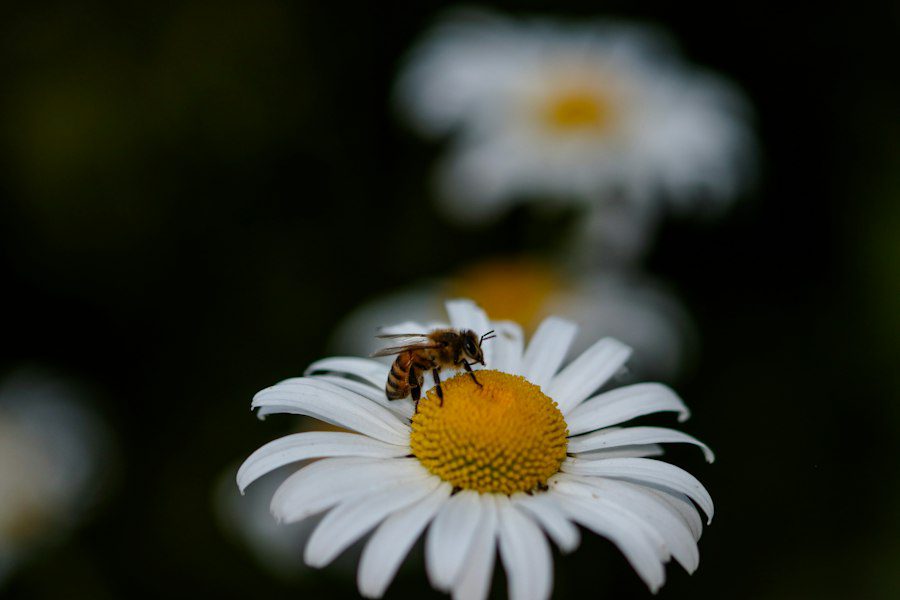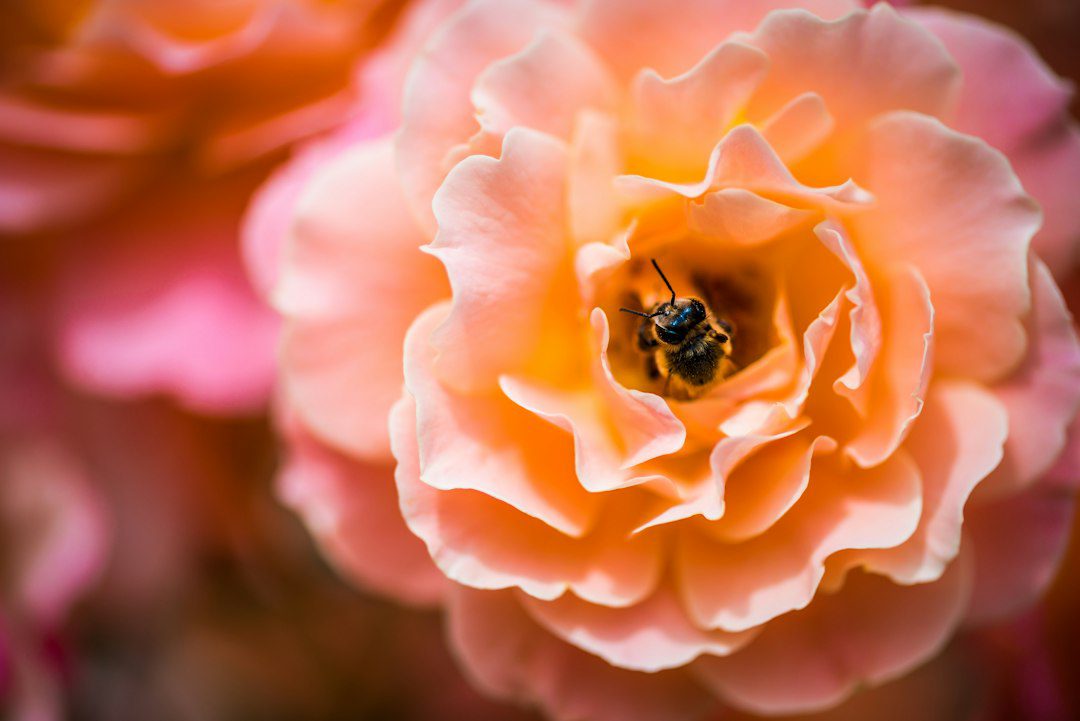Bees are important pollinators that play a crucial role in our ecosystem. They help to pollinate flowers, fruits, and vegetables, ensuring the reproduction of many plant species. However, when bees build their hives in or near homes and gardens, they can pose a danger to humans. Bee removal is necessary to protect both humans and bees.
Key Takeaways
- Leaving bees in your home or garden can be dangerous and lead to property damage or health risks.
- Identifying the type of bee is important for safe removal and preventing harm to beneficial species.
- Proper tools and equipment are necessary for safe bee removal, including protective gear and bee vacuums.
- Safety measures should be taken before and during bee removal, such as sealing off the area and avoiding disturbing the bees.
- If unsure or uncomfortable with bee removal, it is best to call a professional service to ensure the safety of both the bees and humans involved.
The Dangers of Leaving Bees in Your Home or Garden
While bees are generally not aggressive and will only sting if they feel threatened, their stings can cause allergic reactions in some individuals. For those who are allergic to bee stings, a single sting can be life-threatening. Even for those without allergies, multiple bee stings can be painful and cause discomfort.
In addition to the potential danger of bee stings, bee hives can also cause structural damage to homes and gardens. Bees can build their hives in walls, attics, or other hidden areas of a home, leading to honeycomb formation and potential damage to the structure. In gardens, bees can build their hives in trees or other structures, causing damage to the plants and potentially spreading diseases.
Identifying the Type of Bee in Your Home or Garden
Different types of bees require different removal methods. It is important to identify the type of bee before attempting removal to ensure the safety of both the remover and the bees. Common types of bees include honeybees, bumblebees, carpenter bees, and solitary bees.
Honeybees are social insects that live in large colonies and produce honey. They are usually brown or black with yellow stripes on their abdomen. Bumblebees are similar in appearance to honeybees but are larger and have a more robust body shape. Carpenter bees are solitary insects that bore holes into wood to create their nests. Solitary bees include various species such as mason bees and leafcutter bees, which do not live in colonies.
Tools and Equipment Needed for Safe Bee Removal
| Tools and Equipment | Description |
|---|---|
| Bee Suit | A full-body suit made of thick material to protect the beekeeper from bee stings. |
| Bee Veil | A mesh hood that covers the head and neck to protect the beekeeper’s face from bee stings. |
| Gloves | Thick gloves made of leather or rubber to protect the beekeeper’s hands from bee stings. |
| Smoker | A device that produces smoke to calm the bees and make them less aggressive during the removal process. |
| Hive Tool | A tool used to pry open the hive and remove frames without damaging the comb or injuring the bees. |
| Bee Brush | A soft-bristled brush used to gently remove bees from the comb or other surfaces. |
| Spray Bottle | A bottle filled with sugar water or a mild soap solution to spray on the bees and calm them down. |
| Transportation Container | A container, such as a cardboard box or plastic bin, to safely transport the bees to their new location. |
When removing bees, it is important to have the right tools and equipment to ensure the safety of both the remover and the bees. Protective clothing, such as bee suits and gloves, are necessary to prevent bee stings. Bee suits are made of thick fabric that covers the entire body, including the head, and have a mesh veil to protect the face. Gloves should be thick and long enough to cover the wrists.
In addition to protective clothing, tools such as bee vacuums and smokers can aid in bee removal. Bee vacuums are specially designed devices that allow for the gentle capture and removal of bees without harming them. Smokers produce smoke that calms the bees, making them less likely to sting during removal.
Preparing for Bee Removal: Safety Measures to Take
Before attempting bee removal, it is important to take certain safety measures to ensure the process goes smoothly and without any accidents. Clearing the area around the hive is essential to provide enough space for the remover to work safely. Remove any obstacles or debris that may hinder the removal process.
It is also important to notify neighbors of the bee removal. Bees can become agitated during removal, and it is best to inform those nearby so they can take precautions if necessary.
How to Safely Remove Bees from Your Home or Garden

To safely remove bees from your home or garden, it is crucial to use the appropriate removal method for the type of bee present. For honeybees, it is best to contact a local beekeeper who can safely relocate the hive and bees. They have the knowledge and experience to handle honeybees without causing harm.
For bumblebees or solitary bees, it may be possible to remove them yourself using a bee vacuum or by gently capturing them in a container and releasing them in a safe location away from your home or garden. It is important to work slowly and carefully to avoid agitating the bees and causing them to sting.
What to Do with the Bees After Removal
After successfully removing the bees, it is important to relocate them to a safe location where they can continue their important role as pollinators. Contacting a local beekeeper is often the best option, as they can provide a suitable environment for the bees and ensure their well-being.
Preventing Bees from Returning to Your Home or Garden
To prevent bees from returning to your home or garden, it is important to seal any openings where bees can enter. This includes cracks in walls, gaps in windows or doors, and openings in roofs or attics. Use caulk or other sealants to close off these entry points.
It is also important to remove any sources of food or water that may attract bees. Keep garbage cans tightly sealed, clean up spills promptly, and avoid leaving out sugary foods or drinks that may attract bees.
When to Call a Professional Bee Removal Service
While some bee removals can be done safely by homeowners, there are situations where it is best to call a professional bee removal service. If you are unsure of the type of bee or the proper removal method, it is best to seek professional help. They have the knowledge and experience to handle different types of bees safely.
Additionally, if the hive is in a difficult-to-reach location, such as inside a wall or high up in a tree, it is best to leave the removal to professionals who have the necessary equipment and expertise.
The Importance of Protecting Bees while Removing Them from Your Home or Garden
Bee removal is necessary to protect both humans and bees. While bees are important pollinators, they can pose a danger when they build their hives in or near homes and gardens. By taking the proper safety measures and using the appropriate removal methods, bees can be safely relocated and protected. It is important to remember that bees play a vital role in our ecosystem, and their protection should be a priority even during removal.
If you’re looking for information on how to safely remove a bee, check out this helpful article: How to Remove a Bee Safely. It provides step-by-step instructions and tips on handling bees without causing harm to yourself or the insect. Whether you’re dealing with a single bee or an entire hive, this article will guide you through the process of safely removing them. Don’t let fear or uncertainty stop you from enjoying your outdoor space – learn how to handle bees responsibly and confidently.
FAQs
What is the best way to remove a bee?
The best way to remove a bee is to use a flat object, such as a credit card or spatula, to gently scrape the bee off of your skin or clothing.
What should I do if a bee stings me?
If a bee stings you, remove the stinger as soon as possible by scraping it out with a flat object. Apply a cold compress to the affected area to reduce swelling and pain.
Can I use insecticide to remove a bee?
It is not recommended to use insecticide to remove a bee, as it can be harmful to both the bee and humans. Instead, try using a non-toxic bee repellent or contacting a professional beekeeper for assistance.
How can I prevent bees from coming near me?
To prevent bees from coming near you, avoid wearing bright colors or floral patterns, as they can attract bees. Also, avoid wearing strong perfumes or scented lotions, as they can also attract bees.
What should I do if I encounter a swarm of bees?
If you encounter a swarm of bees, stay calm and slowly walk away from the area. Do not swat at the bees or make sudden movements, as this can agitate them and cause them to sting. If you are stung multiple times or have an allergic reaction, seek medical attention immediately.

